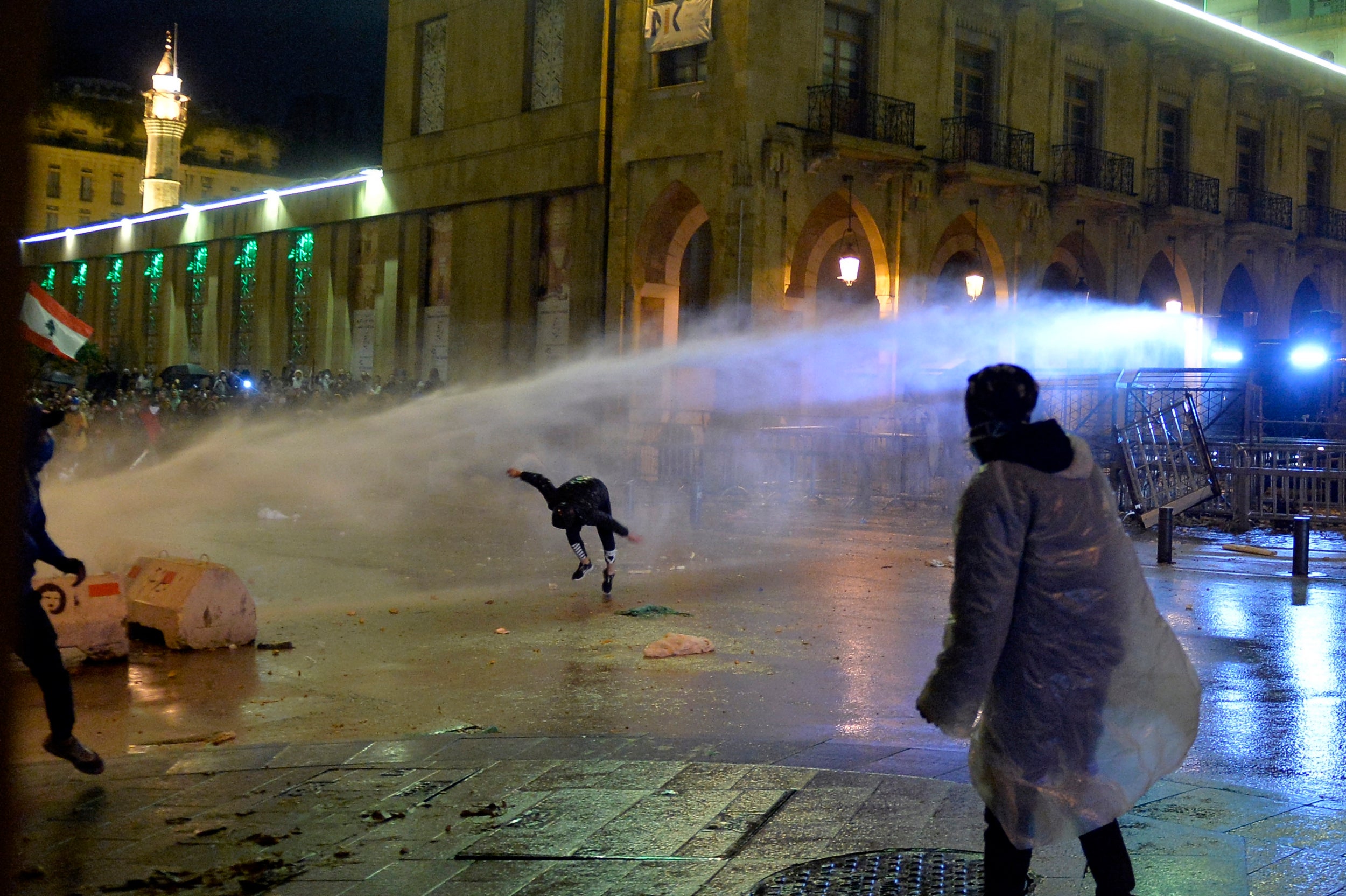The only way to fully appreciate the anger of the Lebanon protests is to be in the middle of them
Demonstrators want a new political system for the country, not just new faces, writes Richard Hall

Protests in Lebanon began with a burst of anger. One night in October, thousands of people across the country collectively and spontaneously flooded the streets to light fires and block roads and generally cause chaos.
Speaking to protesters on those first nights, in between volleys of teargas, it was clear a breaking point had been reached. They had a long list of grievances stretching back years: widespread corruption, economic mismanagement, the inability of the state to provide basic public services and a perennial lack of opportunity.
It was an organic expression of rage, a reaction to one indignity too far. But it was also a message to the country’s political class that there was a cost to continued inaction.
Covering these protests as a reporter is a strange thing. It’s not entirely necessary to be there in the midst of the madness to write the story, but at the same time it’s very hard to get a full understanding if you don’t.
Those initial days of rage gave way to a more strategic movement. Public talks were held in Beirut’s Martyrs’ Square, which became a centre for the protests. Specific institutions and politicians were targeted. Ideas were shared, solutions discussed.
Though the protesters made a point of having no leaders, they were able to make some broad collective demands very clear. They wanted real change: first and foremost a government of technocrats who had the expertise to guide Lebanon out of its myriad crises.
Three months later, despite the resignation of a prime minister and some superficial manoeuvring, Lebanon’s leaders have shown no sign that they are willing to give an inch.
While thousands still take to the streets demanding an end to the old way of doing things, and with the economy is in free fall, the party leaders who have held power since the civil war (many of them former warlords) are engaged in the same horse-trading that has marked every cabinet formation for decades.
If the parties are negotiating over their share of representation in the cabinet, the hope of a “government of experts” as demanded by protesters is already lost.
It is this business-as-usual approach that led to the most violent clashes since protests began this weekend. It came at the end of a “week of rage” that saw banks attacked and roads blocked again. Hundreds were injured in downtown Beirut as demonstrators unleashed fireworks and rocks at police, while police deployed teargas and rubber bullets.
The protests this weekend felt like those first days. I got mixed up again with groups of young protesters as they were hit by round after round of teargas, only to return again to the square every time.
The anger is back, and it rises every day the country’s leaders refuse to listen.
A new cabinet and a new government will likely be formed soon, but it won’t satisfy the protesters. They want a new system, not just new faces.
Yours,
Richard Hall
Middle East correspondent
Join our commenting forum
Join thought-provoking conversations, follow other Independent readers and see their replies
Comments